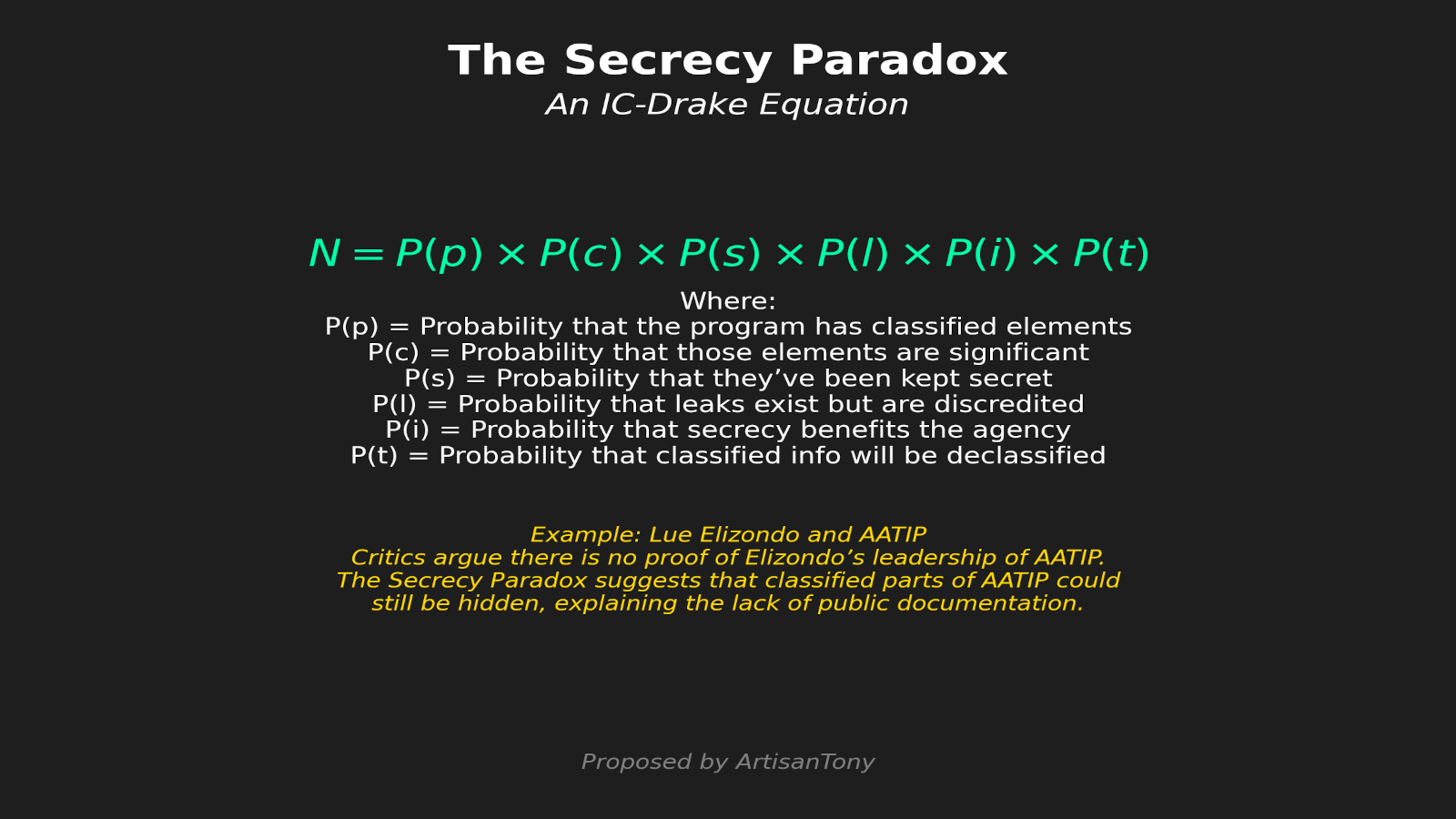I’m proposing a new framework for thinking about classified intelligence programs — a way to estimate the likelihood that some parts of programs like AATIP remain classified and hidden from public view.
I call this The Secrecy Paradox: An IC-Drake Equation.
Just as the original Drake Equation estimates the number of extraterrestrial civilizations, this equation estimates the probability that critical elements of intelligence programs remain undisclosed.
📐 The IC-Drake Equation Variables:
Here’s how I break it down:
1️⃣ P(p) = Probability that the program has classified elements
2️⃣ P(c) = Probability that those classified elements are significant
3️⃣ P(s) = Probability that they’ve been successfully kept secret
4️⃣ P(l) = Probability that leaks exist but were discredited or ignored
5️⃣ P(i) = Probability that intelligence agencies benefit from secrecy
6️⃣ P(t) = Probability that classified info will be declassified over time
The equation:
N = P(p) × P(c) × P(s) × P(l) × P(i) × P(t)
Where N is the likelihood that undisclosed elements still exist.
🤔 The Secrecy Paradox
Here’s the paradox: The more hidden something is, the less likely we are to know it exists. The intelligence community doesn’t just hide information — it also shapes public perception to maintain that secrecy.
Take Lue Elizondo’s role in AATIP as an example. Some critics argue that there is no official documentation proving Elizondo led AATIP. But if we apply The Secrecy Paradox, it’s entirely possible that the part of AATIP that Elizondo worked on remains classified.
In fact, it would make sense that a program studying advanced aerospace threats would have classified components — especially if those components involved cutting-edge technology or sensitive intelligence operations. If those parts of the program are still classified, then naturally there wouldn’t be any public documentation available to verify Elizondo’s exact role.
I’ve generated a sample calculation for the IC-Drake Equation with hypothetical probabilities for the Lue Elizondo case. The resulting likelihood (N) is approximately 26.2%, suggesting a reasonable chance that classified elements of AATIP remain undisclosed and that Elizondo's role could be part of those hidden components.
| Variable | Description | Hypothetical Probability |
| P(p) | Probability that the program has classified elements | 0.9 |
| P(c) | Probability that classified elements are significant | 0.8 |
| P(s) | Probability that they’ve been kept secret | 0.85 |
| P(l) | Probability that leaks exist but are discredited | 0.75 |
| P(i) | Probability that secrecy benefits the agency | 0.95 |
| P(t) | Probability that classified info will be declassified | 0.6 |
This demonstrates the IC-Drake Equation in action: the absence of evidence isn’t necessarily evidence of absence when dealing with intelligence programs. The most important details are often the ones we’re not allowed to see.
🎯 Key Takeaway:
To understand intelligence programs, we must account for what we don't see. This isn't about conspiracy — it's a rational framework that acknowledges the gap between disclosure and reality.
This is The Secrecy Paradox.
